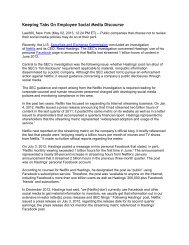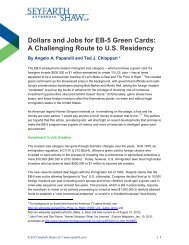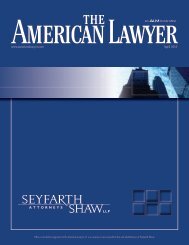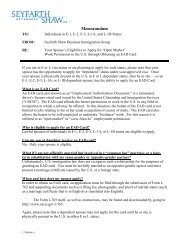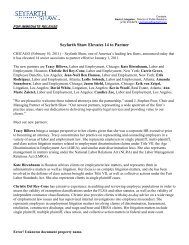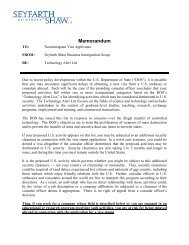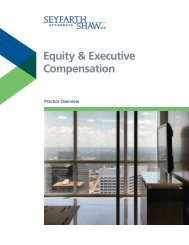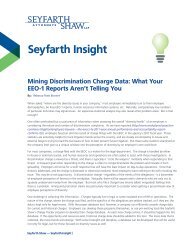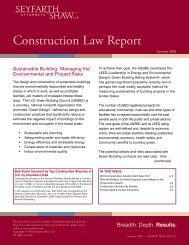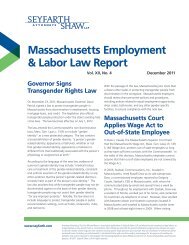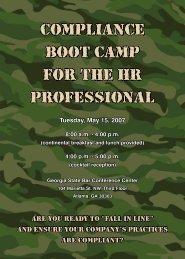Litigating California Wage & Hour and Labor Code Class Actions
Litigating California Wage & Hour and Labor Code Class Actions
Litigating California Wage & Hour and Labor Code Class Actions
Create successful ePaper yourself
Turn your PDF publications into a flip-book with our unique Google optimized e-Paper software.
plaintiffs prevailed <strong>and</strong> some explanation why the presumably lesser settlement amount<br />
represented a fair recovery for the class:<br />
While an agreement reached under these circumstances presumably will be fair<br />
to all concerned, particularly when few of the affected class members express<br />
objections, in the final analysis it is the court that bears the responsibility to<br />
ensure that the recovery represents a reasonable compromise, given the<br />
magnitude <strong>and</strong> apparent merit of the claims being released, discounted by the<br />
risks <strong>and</strong> expenses of attempting to establish <strong>and</strong> collect on those claims by<br />
pursuing the litigation. 486<br />
Furthermore, the court ordered that the objector was entitled to some limited discovery to<br />
evaluate the case <strong>and</strong> to support an objection that the settlement amount was too low to be<br />
approved. Although the trial court is not to decide the merits of the case or easily overturn<br />
a negotiated settlement, the trial court “must at least satisfy itself that the class settlement<br />
is within the ‘ballpark’ of reasonableness.” 487<br />
For practical purposes, the main effect of this ruling has simply been to require the<br />
plaintiffs’ lawyer, in the motion for approval of a settlement, to spell out some theoretical<br />
maximum exposure <strong>and</strong> explain in general terms why a discounted amount was proper. But<br />
the ruling also creates the potential that a court could reject a settlement solely because it<br />
was reduced too much from a theoretical “maximum” exposure value.<br />
The Kullar decision overlooks that forecasting a maximum exposure is problematic,<br />
especially where there is a lack of documentary evidence to prove the extent of possible<br />
damages. For example, in an exempt misclassification case, there may be no agreed way<br />
to assess what percentage of the class was misclassified or the average amount of<br />
overtime worked. In the absence of a comprehensive survey of the class (which can cost<br />
tens or hundreds of thous<strong>and</strong>s of dollars to accomplish <strong>and</strong> even then may be of<br />
questionable validity), plaintiffs’ counsel will be working with cherry-picked data to estimate<br />
the average overtime worked by the class. Similarly, in a case where the employer argues<br />
great variation among the class, there may be a dispute as to what percentage of the class<br />
is properly classified. Accordingly, a theoretical maximum exposure number built on 100%<br />
misclassification of the class <strong>and</strong> 10-15 hours of overtime may bear no relation whatsoever<br />
to the fair “settlement value” of a case.<br />
As long as this exercise of analyzing the proper value of a settlement is truly limited to<br />
some kind of “rational basis” review, judicial scrutiny of the settlement value should not<br />
486<br />
487<br />
Id. at 129.<br />
Id. at 133.<br />
Seyfarth Shaw LLP | www.seyfarth.com <strong>Litigating</strong> <strong>California</strong> <strong>Wage</strong> & <strong>Hour</strong> <strong>Class</strong> <strong>Actions</strong> (12th Edition) 108



